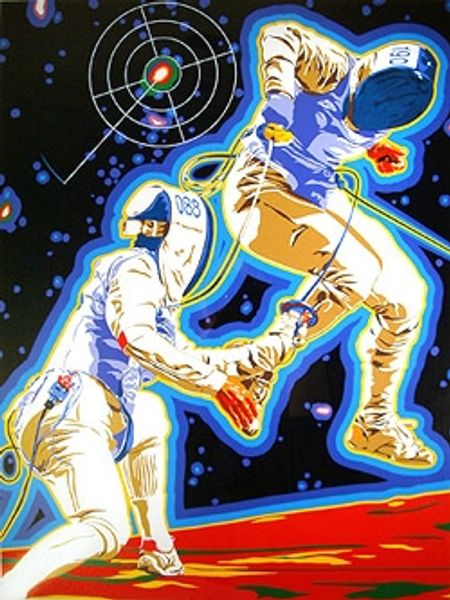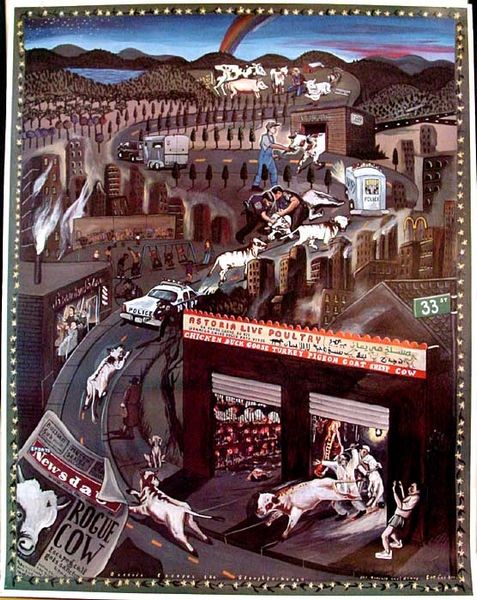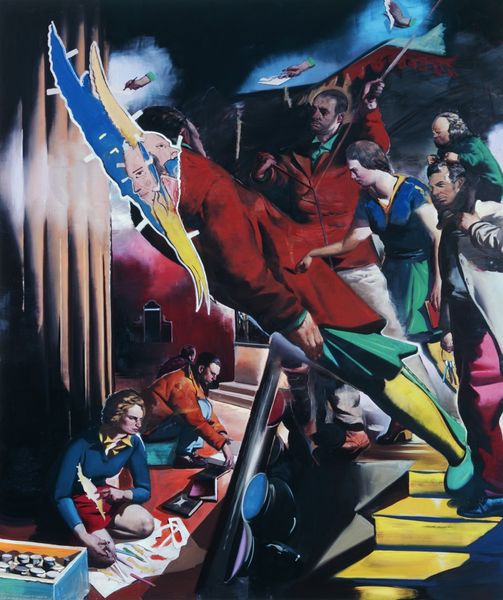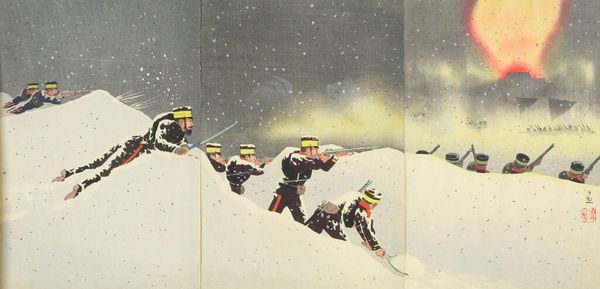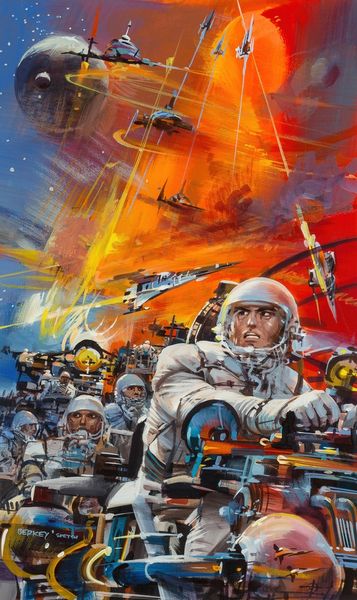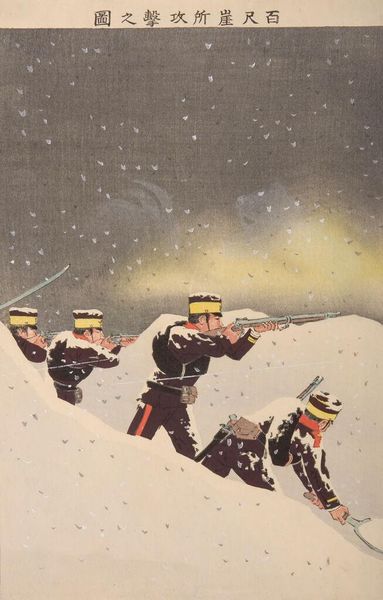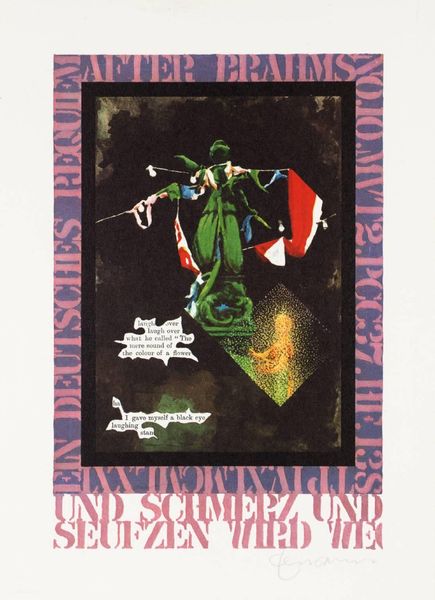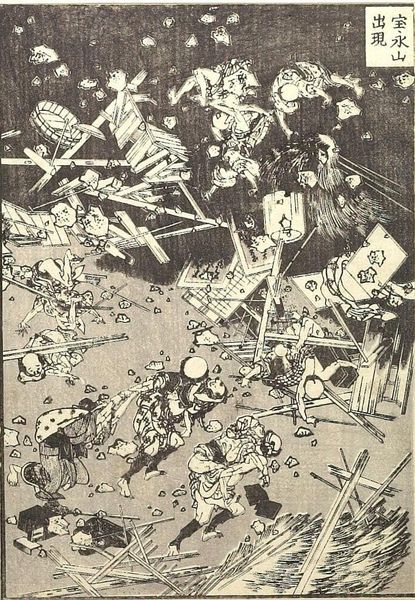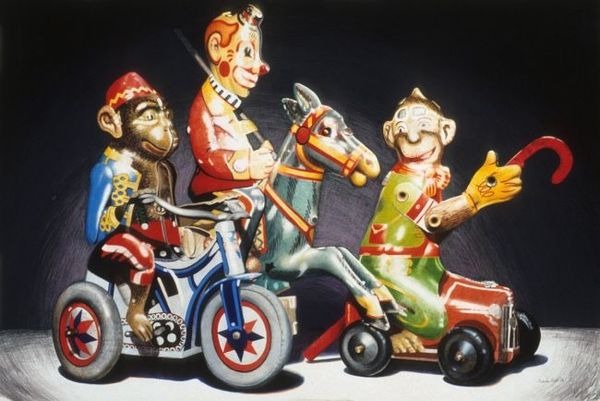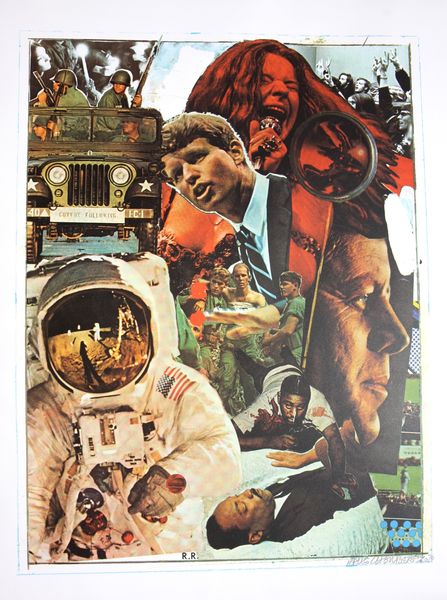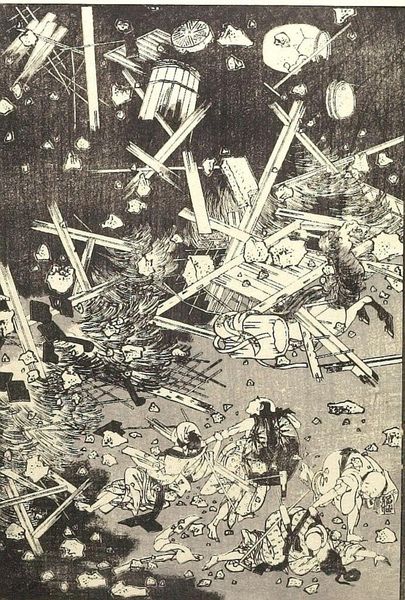
acrylic-paint, poster
#
popart
#
pop art
#
acrylic-paint
#
naive art
#
pop-art
#
cityscape
#
poster
#
modernism
Copyright: Hiro Yamagata,Fair Use
Curator: Well, here we have a work whose formal elements speak volumes. This is the "1988 Winter Olympic Games" poster. Hiro Yamagata, an artist with roots in photorealism who found international fame through laser shows, employed acrylic paint in service of that quintessentially late-20th century medium: the poster. Editor: It’s undeniably busy, isn't it? I'm immediately overwhelmed, almost in a joyous way, by this maximalist explosion of color and figures in motion. It seems like an accurate snapshot of that specific cultural moment, an optimism and pride, maybe? Curator: The use of acrylic offers that pop art flatness of color, economical for mass production, perfect for signage and display, and allowing for incredibly bold chromatic juxtapositions that would have been less attainable using oils. Beyond just representation of winter games, though, how is this piece participating within larger aesthetic movements of the 1980s? Editor: I'm immediately thinking about the Reagan era. Think about the heightened nationalism in popular imagery during the lead-up to, and the games themselves; how national identity was being manufactured and consumed as this heady mix of corporate sponsorship and Cold War pride was put on display. It’s almost garish when viewed through today's more skeptical lens. Curator: Interesting to bring in political associations because, yes, on one level, these posters were commissions—corporate entities paying Yamagata for these bright, vibrant visuals—but look at how the labor is downplayed. It's this super flat surface...you can’t trace a clear artistic gesture to know much about how it was materially manufactured. I mean, the process *is* there, it is acrylic and painting, and the final display is reproducible but there is also a disappearing act. It gives it the aura of immediacy that contributes to poster’s utility. Editor: And thinking about what it communicated in the world at that time...this artwork had an intrinsic relationship with its viewer, a very particular call-and-response relationship within the broader cultural environment, within galleries or splashed on billboards or magazine ads. These symbols reinforced ideas about competition and triumph but ultimately as a sales pitch for country. It begs the question: Who exactly was this “victory” for, anyway? Curator: Well, those types of historical frameworks always inform what *any* physical object means—it really reminds us not to lose sight of all of the different processes involved with "1988 Winter Olympic Games." Editor: Absolutely. A single artwork can represent so many competing perspectives all at once, just frozen there on the surface.
Comments
No comments
Be the first to comment and join the conversation on the ultimate creative platform.
